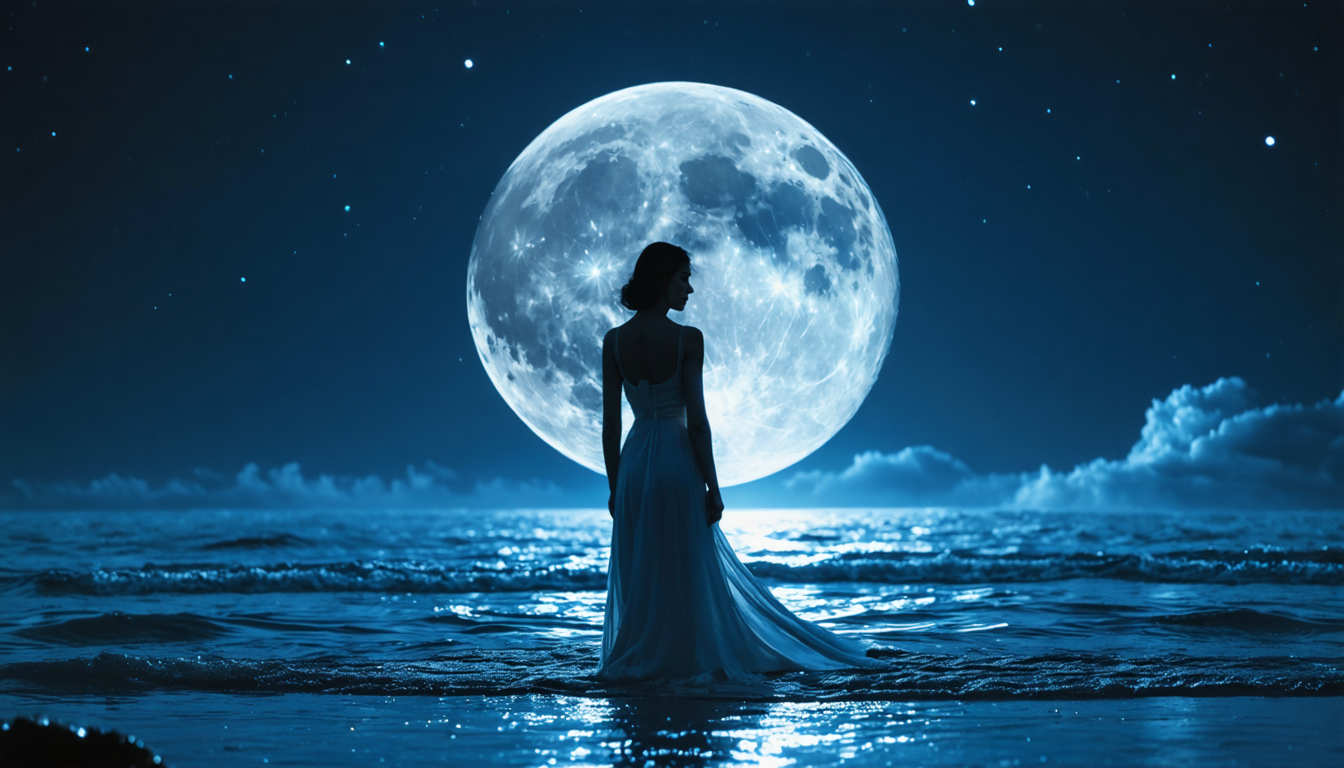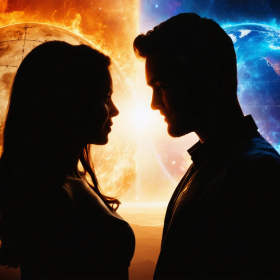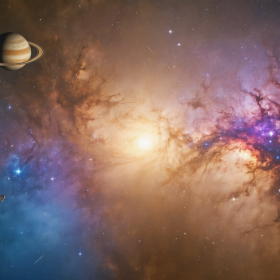Since ancient times, the moon has been linked to human emotions and behavior. Its cyclical phases, from new moon to full moon and back again, are believed by many to exert a subtle but powerful influence on our inner world. Let’s delve into the fascinating world of lunar cycles and discover how they might affect our feelings, moods, and overall well-being.
The Lunar Cycle A Journey Through the Moon’s Phases
The Moon’s journey across the sky, a cycle of changing appearances, has captivated humanity for millennia, serving as a celestial clock and a source of mystery. This transformation, visible from Earth, is purely a matter of perspective – how much of the Moon’s sunlit surface we can see as it orbits our planet. A complete cycle of the Moon’s phases, known as a synodic month, averages about 29.5 days. This is the time it takes for the Moon to return to the same position relative to the Sun as viewed from Earth, thus presenting the same phase. It differs from a sidereal month, which is the time it takes for the Moon to complete one orbit around Earth relative to the fixed stars, approximately 27.3 days. The difference arises because Earth is also orbiting the Sun; by the time the Moon completes a sidereal orbit, Earth has moved, and the Moon needs a little extra time to “catch up” and align with the Sun again to show the same phase.
The cycle begins with the New Moon. During this phase, the Moon is positioned roughly between the Earth and the Sun. The side of the Moon facing Earth is not illuminated by the Sun, rendering it essentially invisible in the night sky. This alignment is approximately Sun – Moon – Earth. As the Moon continues its orbit, a sliver of light becomes visible on the right side (in the Northern Hemisphere), marking the Waxing Crescent phase. “Waxing” means growing or increasing in illumination. When the Moon is halfway illuminated, showing the right half, it is the First Quarter. At this point, the Moon is 90 degrees away from the Sun as viewed from Earth, forming a Sun – Earth – Moon right angle. The illumination continues to grow through the Waxing Gibbous phase, where more than half but not all of the Moon is lit.
The cycle culminates in the Full Moon. Here, the Earth is positioned approximately between the Sun and the Moon, allowing the Sun’s light to illuminate the entire face of the Moon visible from Earth. The alignment is roughly Sun – Earth – Moon. This is the phase of maximum visibility and brightness. Following the Full Moon, the illumination begins to decrease – this is the waning period. The phase where more than half the Moon is still lit but decreasing is the Waning Gibbous, with the left side now primarily illuminated. When the Moon is again halfway illuminated, showing the left half, it is the Third Quarter (or Last Quarter). The Sun – Moon – Earth alignment is again a right angle, but on the opposite side of Earth from the First Quarter. Finally, the illumination dwindles to a thin sliver on the left, the Waning Crescent, before the Moon disappears into the New Moon phase once more.
Understanding the precise timing of these phases also brings us to the concept of a blue moon. This term does not refer to the Moon’s color but rather to its timing. There are two common definitions for a blue moon: the second Full Moon occurring within a single calendar month (which happens because the synodic month is slightly shorter than most calendar months), or the third Full Moon in an astronomical season that contains four Full Moons instead of the usual three. Both are relatively infrequent occurrences governed by the predictable rhythm of the lunar cycle.
Beyond its visual transformation, the Moon exerts a significant physical force on Earth, most notably seen in the tides. The Moon’s gravity pulls on Earth’s oceans, creating bulges of water on the side facing the Moon and on the opposite side. As Earth rotates, different parts of the planet pass through these bulges, resulting in two high tides and two low tides approximately every 24 hours and 50 minutes. The Sun also contributes to tidal forces, and the alignment of the Sun, Earth, and Moon during different phases intensifies or lessens these effects. During the New Moon and Full Moon, when the Sun, Earth, and Moon are roughly aligned, their gravitational pulls combine, resulting in higher high tides and lower low tides known as spring tides. During the First and Third Quarter phases, when the Sun and Moon are at right angles relative to Earth, their gravitational pulls partially cancel each other out, leading to less extreme tides called neap tides.
The undeniable gravitational pull and the striking visual changes of the lunar cycle have, throughout history, led to a profound connection between the Moon and human perception, extending even to language. Words like ‘lunatic,’ derived from the Latin word ‘luna’ for moon, reflect historical beliefs that the Moon’s phases, particularly the Full Moon, could influence mental states and behavior, a concept that has filtered into cultural narratives and is explored further as we delve into the emotional interplay with these celestial rhythms.
Decoding Lunar Influence Emotional Tides and the Moon
For centuries, humanity has gazed at the night sky, charting the moon’s predictable cycle across its various phases. Beyond the astronomical spectacle detailed previously, this rhythmic transformation has been interwoven with myths, folklore, and a pervasive belief in its influence on earthly matters, particularly the ebb and flow of human emotions. This connection is not merely a modern phenomenon; it echoes through history, reflected in languages where words like “lunacy” directly derive from the Latin *luna*, signifying the moon and the historical association of its phases with madness or erratic behavior. Cultures around the globe developed rich traditions linking lunar periods to everything from agricultural cycles and fertility rites to emotional states and psychological stability. While some of these beliefs might seem superstitious through a modern lens, they underscore a deep-seated human tendency to find patterns and connections between celestial events and inner experiences.
Common emotional associations have emerged over time, often aligning with the visual presence and perceived energy of each phase. The *New Moon*, shrouded in darkness, is widely associated with introspection, quietude, and a sense of potential. It is seen as a time for turning inward, reflecting on the past cycle, and setting intentions or planting the seeds for new beginnings – a period of quiet anticipation before the moon’s light begins to return. As the moon waxes towards fullness, a sense of growing energy is often perceived. The *Full Moon*, brilliant and dominating the night sky, is perhaps the phase most strongly linked to heightened emotions. Popular belief attributes increased energy levels, restlessness, vivid dreams, and even intensified feelings of joy, anxiety, or passion to the Full Moon’s influence. It is viewed as a peak of energy, illumination, and sometimes, emotional intensity, a time when hidden things come to light and feelings are amplified. Following the peak, the *Waning Moon* is associated with release and letting go. As the light diminishes, it is seen as a time to shed what no longer serves, to complete projects, clear space, and prepare for the inward turn of the New Moon again.
However, the question of whether these perceived emotional tides have a direct scientific basis remains largely unanswered. While the moon’s gravitational pull clearly influences massive bodies of water, creating tides, its gravitational effect on the fluid within the human body is negligible compared to other forces. Proponents of a lunar influence sometimes point to potential indirect mechanisms. One theory revolves around the historical impact of moonlight on circadian rhythms. Before widespread artificial lighting, the varying intensity of moonlight throughout the cycle might have subtly affected human sleep patterns and hormone production, particularly melatonin, which plays a role in regulating sleep and mood. Disruptions to sleep are well-known to impact emotional regulation and behavior. Thus, a *historical* connection via natural light exposure is more plausible than a direct gravitational or mystical link.
Investigating the scientific literature reveals a complex picture. Numerous studies have explored potential correlations between moon phases and a variety of psychological phenomena, including admissions to psychiatric hospitals, rates of crime, sleep disturbances, and mood fluctuations, particularly in individuals with mood disorders. The overwhelming consensus from rigorous, large-scale studies is that there is *no consistent, statistically significant correlation* between moon phases and these events that cannot be explained by other factors. While some smaller studies might report positive findings, they are often not replicable or suffer from methodological issues. It is crucial to understand the difference between correlation and causation here. Observing that two things happen around the same time (e.g., a restless night and a Full Moon) does not mean one caused the other.
A significant factor contributing to the persistent belief in lunar influence is confirmation bias. When someone holds the belief that the Full Moon causes heightened emotions or sleeplessness, they are more likely to notice, remember, and attribute such experiences to the Full Moon, while overlooking uneventful Full Moons or restless nights that occur during other phases. This selective attention reinforces the perceived connection, creating a powerful anecdotal feedback loop. While the scientific evidence for a direct causal link between moon phases and human emotional states is weak to non-existent, the cultural narrative and personal associations are powerful, shaping how many people perceive their own feelings in alignment with the lunar cycle. These beliefs, whether scientifically proven or not, form the basis for practices aimed at aligning personal life with the moon’s rhythm, as explored in the next section.
Harnessing Lunar Energy Aligning Your Life with the Moon’s Rhythm
Building on the idea that the moon’s cyclical journey through the sky resonates in some way with human experience, many individuals choose to consciously align their personal activities and intentions with these distinct lunar phases. This isn’t about being dictated by the moon, but rather about tapping into perceived natural rhythms to enhance self-awareness, productivity, and emotional well-being. It’s a practice of observing and potentially harmonizing one’s inner world and outer actions with the moon’s visible cycle, using it as a natural calendar for personal growth and reflection.
The New Moon, the phase of darkness when the moon is not visible in the night sky, is widely seen as a time of new beginnings and potential. Much like the fertile ground before a seed is planted, this phase is considered ideal for setting intentions, clarifying goals, and initiating new projects. It’s a period of introspection and quiet energy, perfect for focusing inward and deciding what you want to manifest in the coming lunar cycle. Practical ways to harness this energy include:
* Journaling about your aspirations and desires for the next month or year.
* Creating vision boards or lists of goals you wish to achieve.
* Meditating on your intentions, visualizing them coming to fruition.
* Starting new habits, projects, or creative endeavors, no matter how small.
* Cleaning and decluttering your space to make room for the new.
As the moon waxes and grows towards fullness, energy is thought to build, culminating in the Full Moon. This phase, brilliant and illuminating, is often associated with heightened emotions, peak energy, and the bringing of things into fruition or awareness. It’s a time when intentions set at the New Moon might come to light, or challenges become more apparent. This high-energy period is often used for celebration, expression, and release. Suitable activities during the Full Moon include:
* Engaging in creative pursuits, such as writing, painting, or music, capitalizing on potentially heightened energy.
* Participating in social gatherings, sharing energy and experiences with others.
* Practicing meditation or mindfulness to process emotions that may surface strongly.
* Performing rituals or practices aimed at releasing what no longer serves you, illuminated by the moon’s light.
* Celebrating progress made on goals set at the New Moon.
Following the Full Moon, the Waning Moon begins its descent into darkness. This phase is perceived as a time for completion, release, and letting go. As the moon diminishes, it’s seen as an opportune period to shed old habits, finish projects, declutter, and emotionally release what was brought to light during the Full Moon. It’s a natural time for winding down and preparing for rest before the next cycle begins. Practices beneficial during the Waning Moon include:
* Decluttering your physical space, donating or discarding items you no longer need.
* Journaling about things you wish to release, whether they are fears, limiting beliefs, or negative emotions.
* Completing tasks or projects that have been lingering.
* Engaging in gentle activities like yoga, stretching, or quiet reflection.
* Practicing forgiveness, both of yourself and others.
Utilizing lunar cycles can also be a powerful tool for tracking personal progress and emotional patterns. By observing how your energy levels, moods, challenges, and successes correlate with the moon’s phases over time, you can gain valuable insights into your own unique rhythm. Keeping a journal that notes the moon phase alongside your daily experiences can help identify recurring patterns or sensitivities you might have.
Throughout this process, self-awareness and mindfulness are paramount. Understanding one’s individual response to the moon’s phases is far more valuable than rigidly adhering to generic guidelines. Some people may feel highly attuned to the Full Moon’s energy, while others might find the quiet introspection of the New Moon most impactful. Your personal experience is the most reliable guide. These suggestions are simply frameworks offering potential ways to connect with the lunar cycle. Ultimately, how you choose to engage with and utilize these energies is a deeply personal journey, and there is no single “right” way to do it. The goal is to explore what resonates with you and supports your personal path.
Conclusions
The moon’s allure extends beyond its celestial beauty, potentially influencing our emotional landscapes. While scientific evidence remains inconclusive, many find value in aligning their intentions and activities with lunar cycles. By understanding the phases of the moon and fostering self-awareness, we can explore a deeper connection to our inner rhythms. Ultimately, the power of the moon lies in its ability to inspire introspection and guide us towards greater emotional well-being.


